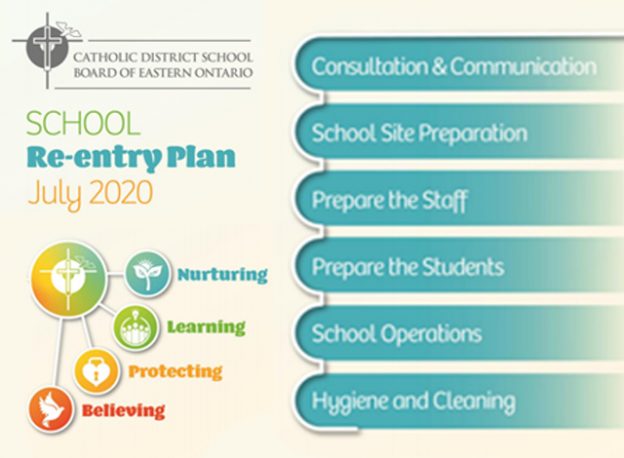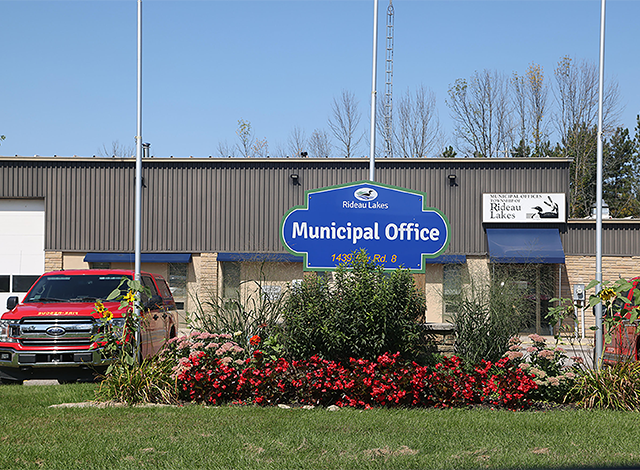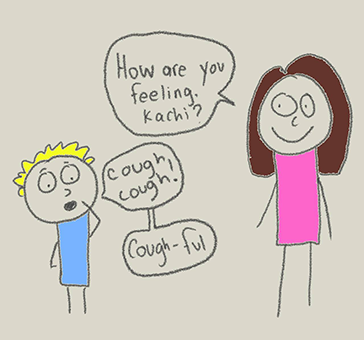COVID-19 and School Reopening
Director of Education, John Cameron, welcomed Dr. Paul Roumeliotis, Medial Officer of Health with the Eastern Ontario Health Unit, and Dr. Paula Stewart, Medical Officer of Health with the Leeds, Grenville and Lanark District Health Unit, to present information to the Board regarding school reopening with COVID-19 safety measures. Both Medical Officers of Health have been instrumental in guiding the Board through the creation of the re-entry plan, as well as in providing regular consultation on the return to school.
“Given the uncertainties that have become common when dealing with this pandemic, Dr. Roumeliotis and Dr. Stewart have been instrumental in providing direction to the board,” noted Director Cameron. “I really appreciate the immense support they have provided to our board.”
“I would like to begin by noting that, the experience that we are going to have in schools is reflected by what we are doing in the community,” began Dr. Roumeliotis. “And so, collectively we need to ensure that our numbers are down, and we need to pay particular attention as we move back into schools. We wanted to come here tonight to give a bit of an overview of what COVID is, and to review some of the precautions that are in place.”
COVID-19 infection is spread through respiratory droplets which can infect someone in close contact through talking, coughing, or sneezing. In addition, touching contaminated surfaces or objects and then touching the mouth, nose or eyes can cause infection. A person with COVID-19 is infectious from two days before the symptoms develop, and asymptomatic infection is possible. The infection is considered resolved 14 days after symptoms develop if there is no fever present and symptoms are improving.
“Symptoms vary from person to person, and initially at the onset, we were concerned about it being dangerous to both spectrums of the age group – young children and the elderly, which is the case for the flu virus, for example. But what we saw was really a disproportionate effect of severe illness, hospitalization and tragically death, in the elderly, and we saw mild illness (with the exception of a few severe cases), and mild spread particularly among younger children.”
Individuals who are at risk for severe illness include the elderly and those with chronic medical conditions. Currently, cases within the local community are low, however we must continue to identify and isolate cases to safeguard the community and the return to school.
“The evidence so far has been that adults infect the children, and then the children become sick. It doesn’t tend to happen the other way,” explained Dr. Stewart. “So really the key to keeping kids safe in school is making sure that the adults in the family are careful about what they do, that we are using masks while doing low risk activities, and that we are not meeting with broad groups of people – those are the things that are really going to make a difference.”
Students must be diligent in not attending school while sick. The local area health units have created a self-screening tool for parents. Information on this is available on the CDSBEO website at www.cdsbeo.on.ca. All parents should screen their children with the tool each morning to ensure that any children with symptoms are not attending school. Cohorting of students at school is one of the effective public health measures that have been put in place to help minimize risk, in addition to other measures such as frequent hand hygiene, enhanced cleaning and disinfecting measures, use of face coverings for students in grades 4 and up, and prompt isolation of sick children and staff while at school.
In children, illness is usually very mild, and they recover well. Younger children with COVID-19 may be less infectious than older children, and Dr. Roumeliotis noted that attending school in person (if there are no underlying health conditions) is beneficial for many students’ education, well-being, and development.
“With the way the virus is transmitted, and with the precautions in place, both inside and outside the school, I believe that school is a safe place. The guidelines are there to offer multiple layers of protection against the infection,” noted Dr. Roumeliotis. “And most importantly, kids should not go into the school if they have symptoms or if they have been in contact with someone who has COVID.”
The implementation of public health nurses in schools adds an additional layer of support and protection in the event of an identified COVID-19 infection.
“Public health nurses will provide support to each school in the development and implementation of COVID-19 health and safety plans,” noted Dr. Stewart. “They will work directly with the principal, teachers and school staff around infection prevention and control. In addition, they will help with surveillance, screening and directing families to testing, as well as providing support for case and contact management. They will be the facilitator to help the schools respond effectively and efficiently, if there does happen to be a staff or student case.”
The new public health nurses are a critical conduit between schools and local health units, and their role is essential for case and contact follow up. If a student or employee is self-isolating after a positive COVID-19 test, the nurse will be in regular contact with the individual, or the individual’s family. Parents of students in schools will be informed should there be a positive COVID-19 case identified in the school. Close contacts of the individual will self-isolate for 14 days from the last date of exposure and be tested. Low risk exposures will be asked to monitor their symptoms and get tested if symptoms develop.
“We thank you both for joining us virtually this evening to present this very important information,” concluded Chair Lalonde. “We thank you both for the support and knowledge you have provided to our leadership team over the last few months. Thank you for the fine leadership that you bring to our region. We can certainly appreciate how your expertise is recognized at the provincial level.”
Virtual Summer Learning Program 2020
CDSBEO has had the opportunity to offer the Summer Learning Program across the Board for the past ten years. This program, funded by the Council of Ontario Directors of Education (CODE), has been an integral part of building literacy and numeracy skills, as well as developing students’ STEM (Science, Technology, Engineering, Mathematics) and coding experience. Due to COVID-19 and school closures, this year’s Summer Learning Program was hosted virtually for all students from Kindergarten through to Grade 8. The program focused on gap closing in numeracy and literacy, with daily programming that included two hours of synchronous learning, physical activity, art programming, virtual field trips, Indigenous perspectives, and many other rich learning opportunities for students.
Principal of Curriculum, Nancy McIntyre, shared highlights of the CDSBEO Virtual Summer Learning Program, which focused on delivering targeted instruction in literacy and numeracy. The program was staffed with exceptional educators who worked continuously and creatively to ensure that students felt connected, cared for, and engaged through the virtual learning experience.
“We had a wonderful group of educators that continued to collaborate and share best practices each day through our network on Microsoft Teams,” noted Principal McIntyre.
In total, 369 students completed the program. Each class, which was facilitated by a full-time teacher and 0.5 educational assistant, received two hours of live, synchronous learning during the three-week program which ran from July 6 to 24.
“The Curriculum Department supported programming for our educators to draw from by providing exemplars of daily schedules and recommended digital resources and learning activities. Our Faith was an important part of the program, and all classes started the day with prayer, grace before meals, and integrated faith into daily lessons,” explained Principal McIntyre. “We are thankful to the Religious Education Department for training our staff in Christian Meditation, as they were able to use this with the children this summer.”
In order to provide a baseline standard to measure individual learner needs and growth in Numeracy and Literacy, each student completed a pre-diagnostic assessment in week one and a post-diagnostic assessment in week three. We were able to see a significant increase in student learning and indicators of closing the achievement gap in literacy and numeracy through these assessments. Programming offered rich digital platforms and resources that allowed teachers to access data highlighting student usage, student engagement, areas of strength, and areas of need, as they continued to customize the learning experience for each student.
“All parents and guardians received a progress report of the areas of growth and areas for improvement for their child,” noted McIntyre. “This report was also shared with the child’s home school teacher to support the transition back to school.”
“It looks like this year’s Summer Learning Program offered some very exciting learning opportunities for our students,” concluded Vice-Chair Eamer. “We appreciate all of the creativity and innovation that went into offering this program to our students in a virtual environment.”















